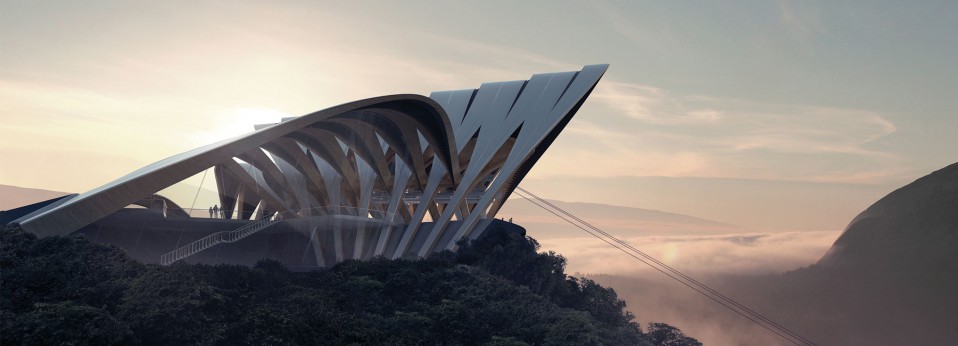“I think that every no you receive makes you more perseverant. I could have thrown in the towel, but I didn’t because I knew there was a lot to unearth and to discover. I interpreted each no as a keep going; a challenge”
ZAHA HADID (Baghdad 1950 – Miami 2016)
Winner of the Pritzker Architecture Prize
Suddenly, like a huge gust of wind that blows in the unknown, we are in a situation that is forcing us to reconsider our surroundings.
And it seems that as everything unfolds, it becomes more and more impervious to our responses.
We are no longer who we were. And we’ve only been inside our houses for a few days. Houses that in many cases we believed were a safe haven where – fortunately – nothing would ever happen to us.
However, circumstances have changed and we must now ask ourselves what to do in the face of this new reality.
Our houses have gone from being a “place to sleep” to being the space where we spend the whole day. And that imposes a different vision on us.
For a simple reason, as we are already looking at details and things that we thought were fine if they were there. Or maybe they weren’t fine, but we put off changes for a rainy day that never came.
Architects have already started to think that this will bring about huge changes. What’s more, the inner tidiness that we were sorely missing is beginning to emerge.
Social media is being flooded with photos of friends saying that their houses or wardrobes have never been so tidy.
But these small jobs are being relegated as the Covid-19 virus spreads at breakneck speed. And our house is no longer that protective environment, because we are realising that we’ll have to design a different world due to pressing needs.
A planet moving in waves and which will never be the same again. Social gatherings, demonstrations, crowds, cool and quiet places… the community we live in and busy places, hotels, convention rooms, airports, and so on.
Hospitals and office buildings, huge companies that are building ever higher structures and with more and better technologies.
Nothing will be the same. And neither will we.
In the early twentieth century, an enormous fire destroyed San Francisco. And then a more modern and more efficient city was rebuilt.
Haussmann reconfigured Paris in the nineteenth century with a massive urban renewal programme, which prepared the city for plague and cholera epidemics.
What’s more, London was redesigned after the cholera epidemic of 1954 and New York also adapted to the demands of the times to come.
What is happening right now is apocalyptic, in its sense of “before and after”.
And we still don’t know the full consequences that this pandemic will have. But something is for sure. Our houses already need to take on a different design. And our workplaces and meeting places where we expect to find many people indoors.
It’s unthinkable to have horrid and miserable houses. They did exist and still do exist. But that should be changed with a huge master plan from the major powers.
If those of us who live in decent houses have an enforced rethink of our way of living, countries must be prepared for another situation like this and give everybody a decent place to live.
Technologies and their future
Technologies are everywhere, but they have also created “sick buildings”, where employees have been subjected to diseases unthinkable in other times.
And these very technologies that were advancing without giving us time to think have stopped right now. They seem to be frozen in time. Covid-19 has paralysed them.
So, in the search for a type of architecture that “saves us”, many professionals have started to outline the meeting areas of the future.
There’s talk of isolated concentration, informal production areas (anti-offices), home working and many other options to minimise the risks of these places that used to be part of our everyday life.
That will make virtual working more common and we’ll work from home more.
This might be one of the formal and functional changes that forces us the most to change our everyday surroundings.
We’ll spend more time at home, which will force us to create more accessible spaces, but also more private ones for our work.
And in each house, or meeting place, we’ll have to be more vigilant about possible outbreaks of new strains of unknown viruses that will appear without warning.
Maybe the use of our voice, or our iris, or our mobile phones will become essential requirements to move around each space without touching objects that could be infected.
We’ll live in an even more automatic world than today’s. We’ll have to disinfect ourselves with more and more things before entering our home and we’ll be shopping from the sofa much more than we do now.
A world after the pandemic.
People after the pandemic.
Our houses after the pandemic.
And architecture, new yet repeated with advanced technologies, after the pandemic.
At the start of the article there’s a quote by Zaha Hadid, an architect who had to fight against all adversities. But what she said is the best reflection for this terrible time that we’re experiencing as if it were a sci-fi film: every NO that we receive must be the best motivation to keep marching ahead.
That’s what we are here for. To intensify efforts and improve our entire surroundings. A type of architecture that is showing failures given this apparently never-ending pandemic.
And the greatest hope: people in the know are already working on this and preparing their answers for when this has gone away.
By Beatriz A.C.
Image: Zaha Hadid Architects/Design Boom








Leave a comment